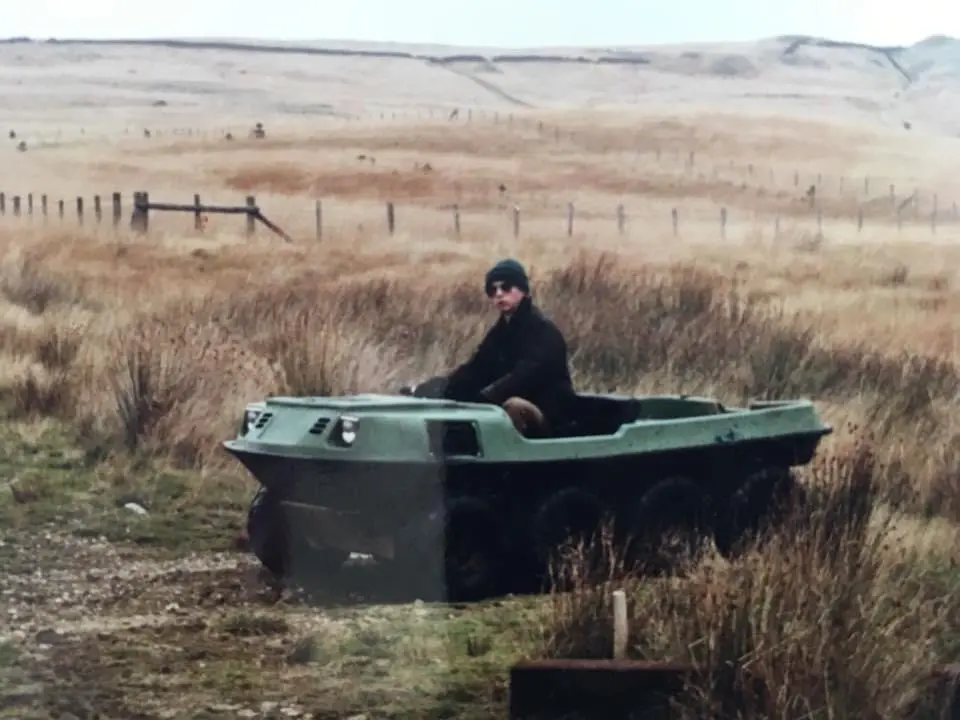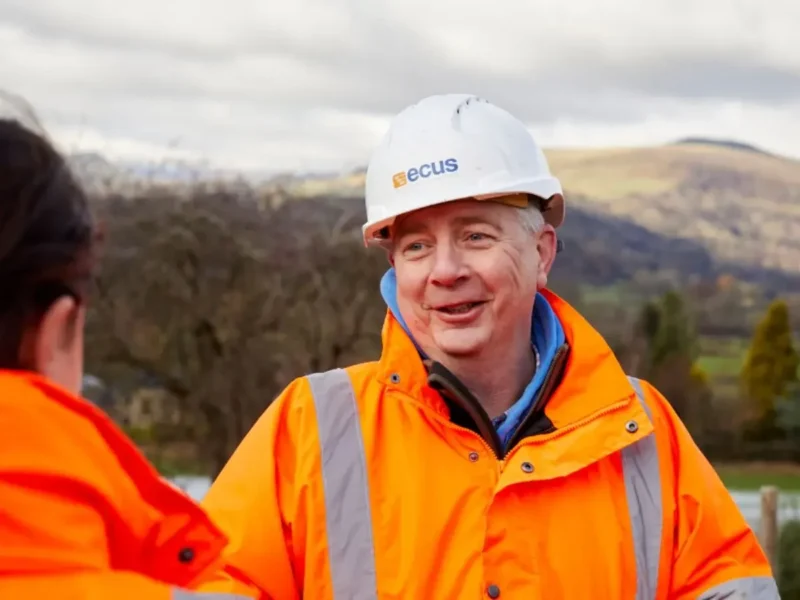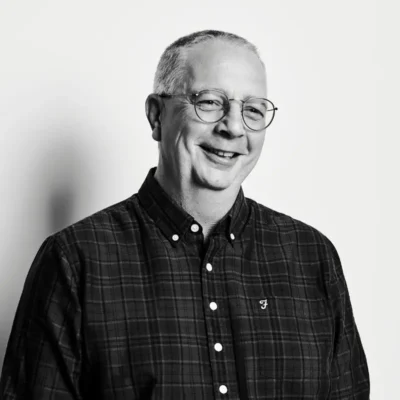We spoke to Iain Weston, who has dedicated years to crafting environments that sustain and enhance biodiversity, to learn more about habitat creation.
The UK has lost more of its nature than most countries globally (Reading.ac.uk). As of 2022, England was the most nature-depleted country in the UK. The decline in priority species continues to be driven by the degradation, fragmentation and loss of the habitats on which our species depend (gov.uk). We must look to increase the area of good quality habitats for wildlife, to halt this decline in species abundance.
We had the pleasure of speaking to Iain Weston, our Head of Habitats and a seasoned expert who leads our Habitats team. He has dedicated years to crafting environments that sustain and enhance biodiversity and teaching the hands that shape it.
We discussed industry challenges, milestones for habitat creation, and how he came to work in this sector.
How did you secure your first role in habitat creation? Where does your interest come from?
“My interest stemmed from being a feral child. I have always been happier outside; I come from quite an academic background but always had an interest in the great outdoors. The academic route wasn’t for me and I was always happier outside with a stick and some mud. My parents had an import company for camping equipment – big tents and camping gear from France and Germany. The tents in Carry On Camping were actually supplied by my dad. Scouts and Cubs also nurtured this feral streak. I did Scouts and Cubs and thought ‘I’d like to do this forever’.”
Iain initially considered the military as a first career, signing up for 13 years, but he then found an opportunity to work in the environmental sector.
He explains: “Initially, I did a bit of everything, like farm work and fencing, but I really wanted to enter the environmental sector, which was hard at this point. I wanted to plant trees and take care of badgers, but unemployment was at an all-time high then. There was lots of countryside where I was but no money – so no jobs. I began working in the sector with a marketing role, as I’m handy with a pencil and a camera. This eventually led me into environmental management.”
Iain describes how in his early career there were roles such as landscape architects and park rangers, but ecologists weren’t common at this point. Although Iain wanted to work in environmental management, it was not as simple a searching and applying for a role, as he details:
“To get into the environmental sector, usually at that point in time you had to volunteer. This limited people getting into the industry because they needed to be supported while they undertook this volunteer work. You’d need a partner or parents to support you while you volunteered for around 6 months. This raised the question: ‘Are we limiting this to the middle class?’.”
The environmental sector has historically been one of the least diverse – but consultancies are taking note. There is clearly an appetite for change.
Demand for experts in climate change and habitat degradation and more is at an all-time high. In the past five years, there has been a 91% increase in UK environmental science job listings (Bower Collective 2023).
“The global environmental services market is projected to grow to over £60 billion per year, depending on which survey you look at”, explains Ecus’ Practice Area Lead for Green Infrastructure, Dr Andrew Ainsworth. “The industry demand for expertise to meet this challenge is also growing rapidly and we are working closely with universities across the UK to help meet this capacity gap.”
What changes have you seen in the industry?
Iain details an increase in awareness of environmental issues: “There has been an increase in public awareness. We used to do rangers campaigns – bottle collections and wastepaper collections used to take place, but people thought you were insane for organising this. And now people have four or five different bins. My daughter was a green ambassador at her primary school at seven years old. The next generation is just far more aware.”
“As for other changes, the job isn’t terribly easier, but the technology and welfare are a lot better – this undoubtedly limited young women entering the industry but there are far more opportunities now.”
This is potentially substantiated by the Institute of Environmental Management and Assessment (IEMA). The Sustainability Tool also carried out poll of 526,415 employees across 537 supply chains which revealed the percentage of women working in the built environment rose from 23% in 2022 to 29.1% in 2023 – the largest rise since the survey began in 2016.
What challenges did you face early on in your career?
“Firstly, it was the physically demanding work. We were all fit and young, but it was tough.”
However, habitat creation is now increasingly assisted by technology.
“The job involved heavy manual labour, for example, walling and fencing, limiting people with smaller frames. Now there is a greater awareness around manual handling and there’s much, much better technology to assist with the work. This opens the sector up to more women and a more diverse range of individuals.”
Are there any positive turning points that you witnessed in your sector?
Iain describes how times have changed in the environmental sector: “Habitat creation is no longer a part of development that people can brush aside as the first option to cut when budgets are tight. It is something that you simply have to do – habitat creation is going to stay and climb higher on the list of priorities for developers.”
This is unsurprising to anyone who has been following Biodiversity Net Gain (BNG) legislation. BNG became a mandatory requirement for all new developments in England in February 2024, under Schedule 7A of the Town and Country Planning Act 1990 (as inserted by Schedule 14 of the Environment Act 2021).
The Government has also consulted on environmental targets for England, which are part of the framework which sets the direction for achieving the 25 Year Environment Plan goals. They include a ‘long-term wider habitats target’ to create or restore 500,000 ha of wildlife-rich habitat outside legally protected conservation sites by 2042.
Iain then goes on to describe another interesting turning point: trees.
“People are now really precious about trees – we’ve done such a good job of educating people on the importance of trees, that sometimes when we actually do have to cut down some trees as normal practice on a successful project it has been met with protests. It can be frustrating, but it is heartening how much people have been driven to care.”
What have been your most memorable projects?
“It’s never the ones you think it is. It’s not the really big stuff – It’s the little things that make a difference to a lot of people on a daily basis.”
“My job is not one that delivers instant benefits. With smaller projects like developing pockets of woodland – Funnily enough I was walking the dog on Saturday in a woodland that I planted 30 odd years ago – you’re creating a public amenity, and you have to wait a long time for that. It’s nice because you can see the regeneration over time that comes from it. The pockets of woodland all over, for me that’s the reward.”
“I’ve worked on amazing flagship projects for organisations for British Waterways and then the Canal and River Trust, but it is the little things that make a difference to people on a daily basis. It is great to see the regeneration. I not only get to see the things that I have contributed to – but I get to actually enjoy them too.”
Are there any species or ecosystems you’ve been particularly interested in over your career?
“I love moorland. I spent seven years working on the Pennine Way, keeping people off the moors and onto a path. The moors are a huge part of what I did. There were massive swathes of erosion 20-30m wide, where now there is thankfully just grass. I love being up there, and although the work was tough – freezing winters and roasting summers – the camaraderie was great, the team bonded through adversity.”
Which particular environmental challenges are you seeing in habitat creation?
“I don’t think the sector is adapting quickly enough with what we design and deliver – a lot of the tree and plant species that habitat creators plant need to be different – I’m the last link in the chain as I put the trees into the ground, but everyone across the sector is seeing that year on year plants and trees are failing. We need to be factoring in these changes when choosing species. If we don’t adapt to climate change happening right now we’ll face many plant losses. Invasive species will also be increasingly difficult to deal with as temperatures increase. We’ve seen it with Himalayan balsam and Japanese knotweed.
There’s lot more going on than just everything getting a little bit warmer.”
If you are interested in a career with Ecus, get in touch with us here.








